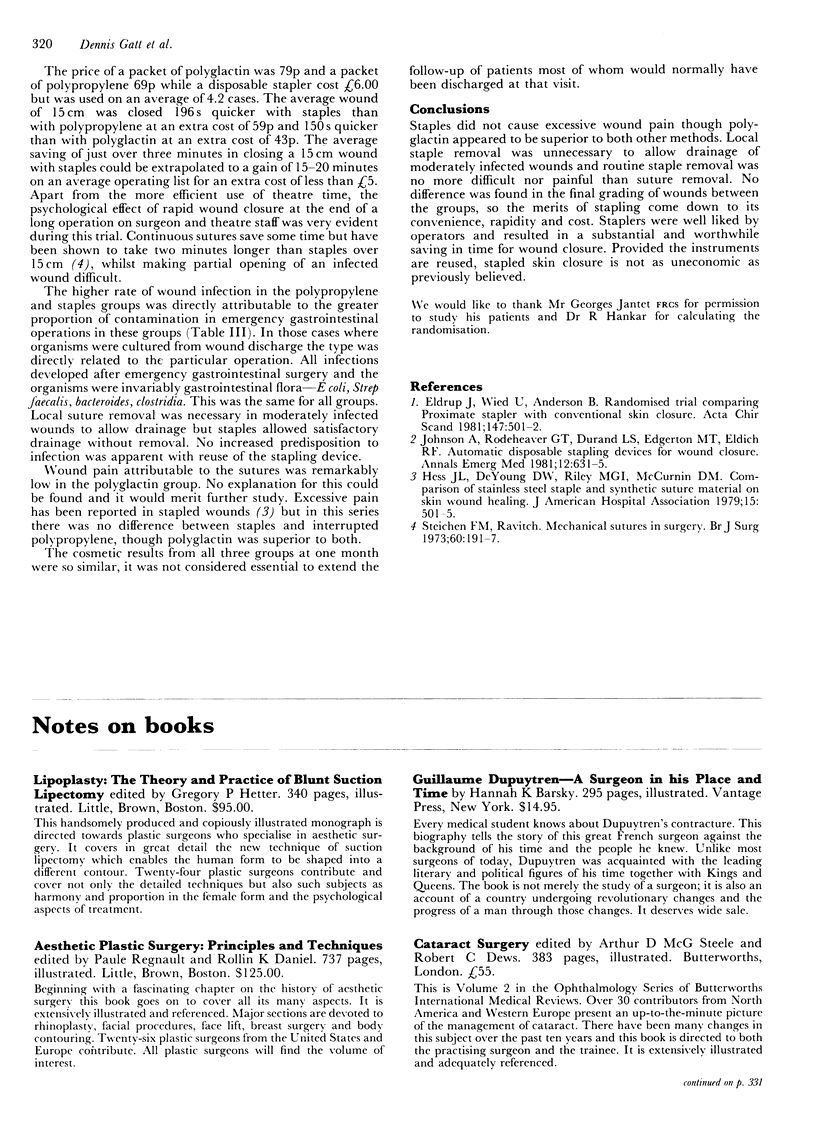Abstract
Skin staples were compared with two conventional suture methods for speed, convenience, effectiveness and cost. One hundred and ninety-five patients having linear abdominal incisions were randomly allocated to one of three methods of interrupted skin closure--polypropylene sutures, polyglactin sutures or stainless steel staples and the wounds were assessed over 30 days. The mean rate of wound closure using sutures was 4.2 cm per minute while staples were faster at 22.5 cm per minute and saved an average of three minutes per wound. The time saved was considerably greater with long incisions. Staples cost 50p more per 15 cm wound than either suture. In other respects the three methods were comparable except that polyglactin caused the least wound pain. We believe the advantages of speed and convenience of skin staples outweigh the extra cost, provided the disposable instruments are reused until empty.
Full text
PDF


Selected References
These references are in PubMed. This may not be the complete list of references from this article.
- Eldrup J., Wied U., Andersen B. Randomised trial comparing Proximate stapler with conventional skin closure. Acta Chir Scand. 1981;147(7):501–502. [PubMed] [Google Scholar]
- Johnson A., Rodeheaver G. T., Durand L. S., Edgerton M. T., Edlich R. F. Automatic disposable stapling devices for wound closure. Ann Emerg Med. 1981 Dec;10(12):631–635. doi: 10.1016/s0196-0644(81)80086-8. [DOI] [PubMed] [Google Scholar]


